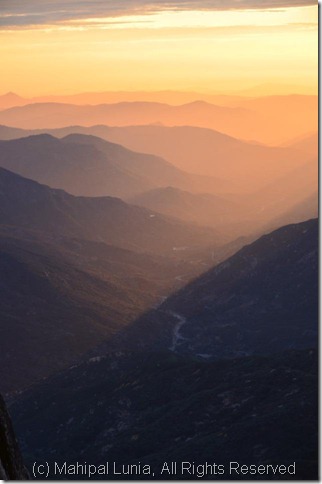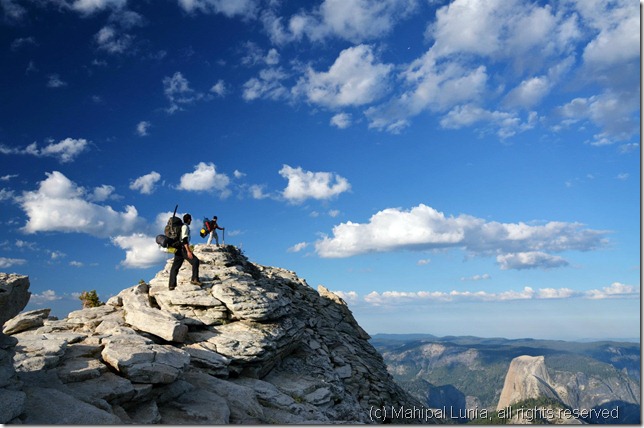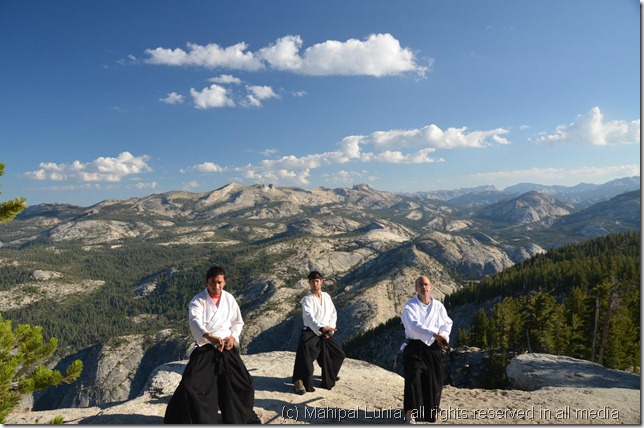This is a piece of stream of consciousness writing on one of the key values/guiding principles of Mt. View Aiki Kai: holding an aesthetic perspective. This personal essay will explore the following ideas:
- Beauty is what marks the pollen path/golden path: the path where one finds oneself in the lap of infinity
- Fear is the result of chaos/chapel perilous, and the way out is a return to and through beauty (elegance/symmetry)
- Beauty heals, transforms, and enchants the world
- Beauty emerges from you and your unique creations when your Personal Impulses are followed completely
- The God of Beauty, the masks of eternity
- Stalking Beauty to find oneself, making Beauty the GPS for your soul
What follows in the next 3,000-odd words is my understanding of this elusive perspective, at this point in time.
I have anonymized the names of my students out of respect for their privacy.
--------------------------------------------------------------------------------------------------------------------------------------------------------------------------------------------------------------------------------------------
The world seemed to have become disenchanted and had transformed into a very scary place. My neighbor’s footsteps on the second floor would make my heart race and I would break out in a cold sweat. I had curled up in the bathroom tub, the bathroom door shut: the fear had found home in my body-soul. My world was shrinking, and even though I was locked away in the bathroom for well over 12 hours on this one Saturday in 2008, I did not feel safe. For over the past few months, I had started to cut myself away from the world, friends, and family. It was at this point—with the help of numerous therapy sessions (to deal with my deep trauma, my personal demons)—that I realized I did not want to live like this—in a world filled with fear, immobile to deal with life. Yet, I still had not found a way out of the paranoia and chaos my life had become.
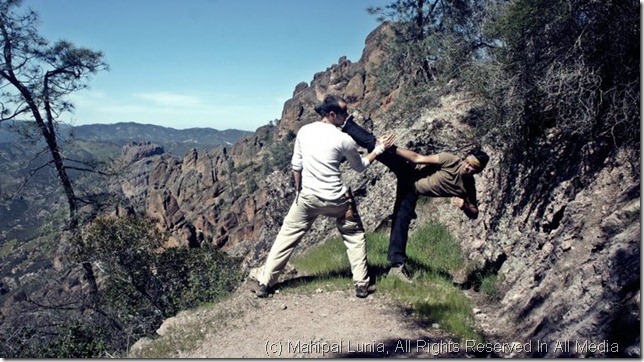
Time was at a standstill, my heart went into palpitations. The tears rolled down, and even though—after a while—the tears dried, my head still pounded with pain and the body remained frozen there in the tub. I wanted a way out. I did not want the fear to grip me to the point of immobility. My mind and heart screamed for relief, and it was in those periods of intense pain that I started writing once again, especially my Urdu poetry. It was here that I truly understood this shaayari which I had recited countless times, but had never really understood until then:
| Dil Ki Kharracho ko log shayaari Kahate hai to dark nahi hota/ It does not bother me When people call the wailings of my heart poetry,
Dard to taab hota hai, jab log wah wah kahate hai/ However it hurts deeply me when people praise those lines with wows’ and claps
|
During one of these sessions, pouring my heart out in writing, I remembered this was not the first time I had frozen with fear—and in the past I had found my way through it. I wanted to replicate that, and find my way back. I wanted to model my own way like how NLP had exquisitely taught me to do:
Modeling is the art and science of replicating excellence. It’s built on the premise that success leaves clues, and to replicate any success in a human endeavor, you have to replicate what the model does exquisitely well. From my perspective it is very mathematically precise and creates astounding results. However, in layman’s terms, you want to be able to track and replicate the physiology (the way the body is held, thus directly impacting what part of brain is used), the belief systems (which dictate what is true and what is possible), the language the model uses (in communicating with the Self and with the other) and, I would add, one’s personal teleology (directionality of his being). When these are tracked and modeled, they can then be “installed” in others—much like loading a computer program. The Radical Change Group will shortly be producing a series on this, if the field of modeling is of interest to you. I would also heartily recommend the works of Robert Dilts, especially the Strategies of Genius. Now, back to the story.
My mind raced back to my time as a young teenager studying Shotokan Karate. One evening, my sport karate coach pitted me against the current National Champion for Kumite (sparring) practice. The champ’s reputation for a fantastic mawashi geri (roundhouse kick) preceded him and stuck fear in the hearts of most of his opponents. As I sparred with him, he continued to easily plaster me over and over again, while I stood there, frozen with fear, like his own personal makiwara (wooden dummy used for striking practice in martial arts). To add insult to injury, he would tell me how he was going to score the next point, and then proceeded to do so. The fear of facing him made those Thursday evening sparring sessions dreadful encounters, and I especially hated the smile on his face every time his roundhouse kick connected to rearrange my face.
This went on for at least a few months. But then, one fateful Thursday evening, things shifted. I sat, watching him spar, and saw the beauty and efficiency of his technique. I was overjoyed by the possibilities of the human body. I was now sitting there, enjoying the elegance of his mastery. The fear and dread vanished, and was replaced with a fascination calling me forth to participate. Now, I could not wait to get into the ring with him and, as I did, something miraculous happened: I started to flow with him as though in a dance. I evaded his famed roundhouse kicks and, for the first time, connected my roundhouse kick to his face. Not once, but thrice in that one evening. I could not believe it, and I was ecstatic. My coach was shocked, and so was the champion. From then on, my sparring would change completely—I continued to win against other national champions over the years, and the roundhouse kick that had caused me so much anguish became my weapon of choice. This was the beginning of my being known for my mawashigeri (roundhouse kick, as seen in the picture above)
No one around me had realized what had happened, yet something in the very core of me had shifted that evening, and a complete metamorphosis transpired. And this pattern repeated itself many times across different contexts. For example, high altitudes used to scare me due to my asthma. But my dad encouraged me to go high into the Himalayas, and to just face it and open myself up to whole new worlds. So, in the summer of my 15th or 16th birthday, I headed into the Himalayas to climb Sar Pass, often referred to as “the gateway to heaven.” It was a 15-day adventure, and I had never done anything like it before. I was quite scared. Walking through the forests sent shivers down my spine, and in some places I froze with fear—especially when the night would settle in. I could not even see my own hand in this darkness, and the sounds of the forest animals magnified my fear by many folds. But one night, I noticed something—a startling discovery. Because I had lost touch with my body, my mind would race and create the worst-case scenarios. The release would only come in the morning when, overjoyed with beauty, I merged with the environment. There was nowhere to go and nothing to do but just bask in the radiance of everything. What released the fear—and also the psychosomatic triggers of my asthma—was beauty, and losing myself in it.
Frank Herbert’s epic novel Dune holds a great scene where Lady Jessica teaches her son Paul Atreidies the litany against fear. The book captures in great detail the dread and its ability to freeze people, especially during the kind of tests Paul has to take from Mohaim. (This freezing is what causes deep trauma. If you wish to study the structure of Trauma and ways around it, I highly recommend Waking The Tiger By Peter Levine and also listening to these recordings gifted to the world with the Radical Change Group project). Lady Jessica instructs Paul to memorize and feel the litany with his totality. He experiences its magic during the test of pain and many times later. Reciting it aloud, you cannot help but be pulled into it and feel its wisdom. Try it.
I must not fear.
Fear is the mind-killer.
Fear is the little-death that brings total obliteration.
I will face my fear.
I will permit it to pass over me and through me.
And when it has gone past I will turn the inner eye to see its path.
Where the fear has gone there will be nothing.
Only I will remain.
What my experience in the Himalayas taught me was that arriving at the purity of the “I” is critical to dealing with fear. The lack of control over chaos (which accelerates paranoia) is what causes fear and in its worst case, leads you into deep trauma. I know this very well from first hand experiences that lasted over a span of few years. I remember the many times this fear caused me to lock myself in rooms and cut myself away from friends, family and the world. For this was my own “Chapel Perilous.”
I was introduced to the idea of Chapel Perilous while reading Timothy Leary’s Game of Life, but it started to make more sense in my interactions with Robert Anton Wilson (read his Cosmic Trigger 2) and Antero Alli (read AngelTech or engage in his 8 Circuit Mind Course.) Uncle Bob once explained it as “Chapel Perilous”—that vortex where cosmological speculations, coincidences, and paranoia seem to multiply and then collapse, compelling belief or lunacy, wisdom or agnosticism.”
Back in the tub, I knew what I had to do. It was not easy by any stretch of imagination to make that journey from the mind—where the paranoia exists—to the body/heart—where the joy resides. The fear grips you, and you have to let it pass through you. It took me a while, but I stood up, walked to the door, slowly unlocked it, and opened it a crack. I slipped out to the dojo after a few weeks absence. Those were the longest 400 meters I have walked in my life: from my apartment to the park. My students were happy to see me, and I remember Fernando asking me “How are you, Sensei? It’s good to have you back.” He then stepped away to let me lead the class again. And in working out and being with my students, I remembered the magic of the art of Kaze, and the joy it has always given me. The beauty, elegance, and sheer effectiveness of the art had always brought me home to myself. For this art serves as my guidepost to what the Navajo Indians have called the Pollen Path.
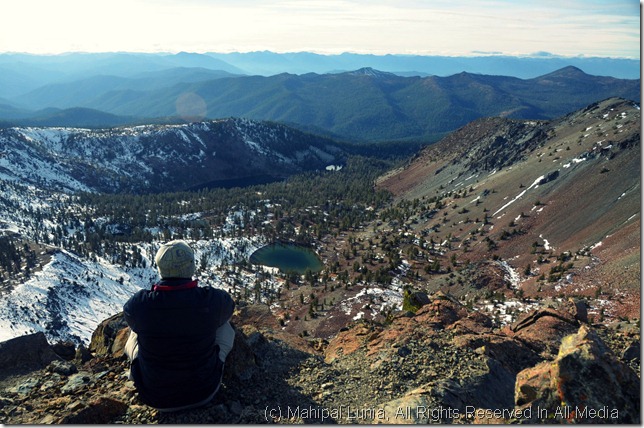
“Oh, beauty before me, beauty behind me, beauty to the right of me, beauty to the left of me, beauty above me, beauty below me, I’m on the pollen path.” Pollen is the life source. The Pollen Path is the path towards one’s center, towards one’s heart. It finally clicked for me that beauty was the marker of the path, and fear was really the absence of beauty, or the absence of the life source itself.
I was once again in somewhat of a state of ecstasy. Over the next few months, I had more episodes of the fear paralyzing me, but now I used beauty as the guidepost to return to my center and towards my deepest sense of embodiment. This embodiment started leading me out of the Chapel Perilous without losing my sanity completely. Beauty and radiance as a state of being now marked the way. I started to understand what Osho had said repeatedly: “Look deep into your heart. Listen to the still small voice within. And remember one thing: life is fulfilled only through longings, never through ambitions. Life becomes blissful only through the heart, never through the mind. Mind creates science, the heart creates religion. The mind can give you better technology, better gadgets. The heart gives you the real, ultimate values: love, bliss, truth, freedom, awareness, God. And a life without these values is valueless.”
In short, my understanding of Chapel Perilous is a place where your soul goes when lost, and it is usually an “out of body experience.” The way out is the return from the mind back to a sense of deep embodiment. This deep embodiment is also “the rapture of being alive” and perhaps the true secret as explained in Hakuin’s Song of Meditation where he ends the poem with “this very body, the Buddha.”
I had made a big decision: to stay true to my martial arts path. Now and again, I would make beauty the true marker and true perspective in my life, and explore the most beautiful places in Nature I could find. I had not done any unmapped backcountry explorations in over ten years, and I yearned for the sense of freedom and expansion I had experienced while crossing through Sar Pass and exploring Ladhak among dozen other ten-plus day explorations during my teen years.
The following weekend I jumped into my Audi and took off, alone. After a 4 1/2 hour drive I found myself in the Yosemite National Park’s Visitor Center, collected maps, bought a John Muir book and headed off to explore some trails along the Tioga Pass with my 40-pound backpack. I headed onto the quietest of trails that the tall, blonde Park Ranger had suggested and boy, was he right. Hours of walking absolutely alone and bathing in the beauty was therapeutic. Late afternoon I found a fantastic camping spot with 360 degree views and quickly unpacked the tent. I brewed some green tea and sat down reading the Muir notebooks. This amazing explorer’s perspective spoke deeply to my heart and just by looking all around me I could see why he was so deeply in love with the Sierras. One particular reflection moved me to tears: “When we contemplate the whole globe as one great dewdrop, striped and dotted with continents and islands, flying through space with other stars all singing and shining together as one, the whole universe appears as an infinite storm of beauty. Everybody needs beauty as well as bread, places to play in and pray in, where nature may heal and give strength to body and soul alike.”
After the soul-nourishing weekend, I was back in the dojo the following Tuesday evening. We worked on the basics and I showed them the exquisite elegance of cross blocks in dealing with oncoming attacks. “You know, the thing that sold me on Kaze Arashi Ryu (KAR) was watching Sastri Sensei doing the cross blocks, and in it I saw an answer to a question on body positioning (Tai Sabaki) that I had not resolved even after years of practicing Shotokan Karate, Okinawan Kenpo, and Wushu. The simplicity and effectiveness of Sastri Sensei executing cross blocks had been enough for me to know this I had to learn this art, embody it, and make it my own. You see, back then I did not know it was the sense of symmetry, elegance, and beauty that had captivated me. It was the gracefulness of Sensei’s movements that had had me entrained completely as though in a trance, in Aesthetic Arrest.”
One of my students asked, “Arrest what?” I smiled, and reminded myself to speak in the language that the others can translate, for the inability of student in understanding something is the failure of the teacher, not the student. I stepped back a bit, took a deep breath, and quieted my mind. I looked at the five students who had gathered around in a circle, waiting to understand, as the night began to creep in. This scene reminded me of the many nights we had stayed back after class while apprenticing under Sastri Sensei: we would hang on to his every word, as though the unraveling of new worlds was happening right before our eyes. Now, it was my turn to pass this forward.
“I have long told you boys to study Joseph Campbell. Campbell similarly studied a literary giant named James Joyce. It was Joyce who first coined the term ‘Aesthetic Arrest’ in his book Portrait of The Artist. The way I understand it, it is the experience of radiance as you behold an object. This radiance is the hidden power behind the world shining through in a physical form. You are arrested or mesmerized in silence by the wholeness, the harmony, and the rapture. You experience an enchantment of the heart. This enchantment is what will bring you from your mind to your heart. This will get you out of the Chapel Perilous that is created by the mind, and bring you to joy that resides in the heart. I am just rediscovering this. And as you rediscover this, you will find that you offer yourself in service to the world and you cherish it all…and perhaps even understand the quote ‘We have met the enemy, and it is us.’”
The class was supposed to be done by seven, and it was way past eight. One of my senior students jumped in, “Sensei, I have a few questions. May we speak about it as we get a bite to eat?” We piled into our cars and rushed to our regular place—a nearby, quaint Chinese Vegetarian restaurant off El Camino Real—and ordered our favorite Singapore noodles, sautéed mushrooms, and fried tofu dishes. Our conversation continued: “Sensei, I have been thinking that I have experienced that arrest you speak about when I listen to Latin Music. Where else can I experience this?”
“It’s good there is something that gives you that wholeness and you experience that beauty that brings the world to a stop. Another way is to experience nature. Perhaps a trip into the backcountry, cut away from everything in civilization.” We cleaned up the plates, sipped some Jasmine tea and, I noticed the emergence of a hunch—an impulse from deep within. I was not sure where this would lead me, yet I knew I had to stay true to it. As we walked back to our cars, I laid out a proposal to the students. “Let’s organize a Shugyo deep into the backcountry of California. We will go away for the weekend and train in the wilderness. Let’s head to Sequoia Redwood Forests—I know this old abandoned trail where the redwoods rise to kiss the heavens. There will be very few people, if any. Let us find that beauty and train in it.”
The students were as excited as I was, and the three of them cancelled their other plans to make the trip three days later. Thus began the marriage of martial arts with backcountry exploration and the training in nature’s own lap. We track our progress by stalking beauty—much like a hunter tracks prey—and allow that beauty to transform us. My love of photography had returned, for I now also worked on creatively capturing that sense of harmony that few of us learn to see. But I know that this beauty was the same marker of Novajo’s Pollen Path and Frank Herbert’s Golden Path (the path leading humanity to infinity).
The results of this marriage were nothing short of stunning. I transformed, and so did my core group of students. Personally, my photography has improved dramatically—for it is the exotic marriage of martial arts, adventure trips, and an aesthetic perspective created by the rather unique expression of the martial arts I have studied for over twenty years. My periods of being frozen by fear have diminished greatly to the point where they are almost non-existent. My relationships with friends, family, and nature have improved. And my students have opened up to beauty in their lives as well: a few of them have taken up serious hiking, while others returned to dancing. One particular student who was a serious climber in the past, but had not climbed in over seven years, returned to his love of nature and, in his words, “a return to peace.” He transformed so much that he took leave from his high profile job for a month to explore Denali National Park and scale Mt McKinley, fulfilling one of his long cherished dreams. He returned looking ten years younger.
These trips and training have continued over the years, and none of the students have wanted to miss them. On one recent trip to Shasta Trinity National Forest in November of 2012, as I was clicking the picture of old trees, a student asked, “How is that I take the same photograph as you, Sensei, but it does not come out even remotely as beautiful?” I laughed hard, along with the two other students, and I replied, “A teacher’s job is to teach you how to look; however, it’s entirely up to you as to what you see and where you find harmony. Keep at it, and more importantly, do it your way. As you find more and more of yourself, I believe it will show in the pictures or other art you truly create, because you will capture those same trees in your own way. You will capture the trees while being in empathy with them, almost as though they will direct you to that place of perfect harmony. Trust me, this will happen—but you have to keep at it, and ask the tree permission to know it, and, as in the poem Lost, it will respond. You have to learn to listen. This is the same with our martial arts practice of Kaze Arashi Ryu. You have to pay close attention, let its beauty teach you, and then make it uniquely yours. Ultimately, you must transcend it, too.”
By now we had reached the top of Mt. Eddy after a hard, hard climb. We had three injured climbers, but the will and the promise of beauty had bought us to the very top. And then, the views of Shasta to the east, Shasta Lake to the south, the Pinnacles to the west, and Klamath Lakes to the north rejuvenated us completely. All of our tiredness was gone, the pain from our sore muscles and injuries was forgotten: ecstasy rolled in, and we cherished that sight through the night into the morning while on the top of that mountain, all by ourselves. Once again, Beauty had come to the rescue, and the reward was great.
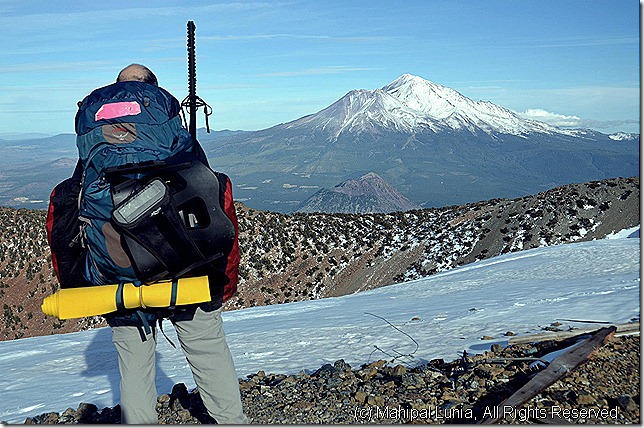
In the early morning, after packing up in the below-freezing temperature, we got ready to head back down to train on the tanto and Kokyo Ho by the emerald-colored Dead Man’s Lakes. As we carefully started to slide down the loose gravel and big rocks at an almost 70 degree angle, I remembered JC’s brilliant insight: “In choosing your god, you choose your way of looking at the universe. There are plenty of gods, choose yours. The god you worship is the god you deserve.” And I said out loud, “I choose this, I choose beauty.” Gods are meant to be role models, masks of eternity and guide-posts to a good life. I choose beauty. My longing was now to find the beauty, elegance, symmetry, and wholeness that the John Muirs, the Joseph Campbells, my Senseis, the Buckminister Fullers, the Ansel Adams, and the Oshos had found before me.
When I relayed this wish to my students later on, one of the more religiously staunch students said to me “Sensei that would be considered sacrilege in many circles.” I did not miss a beat as I said, “Absolutely. This is the beginning of one’s duty of sacred rebellion.” She was taken aback, and I let her sit with it a bit and then recited a Shayari/poem I had written in Urdu not too long ago:
| Haar Mazhab Nein Humhe Aab Khafir Karaar Kaar Diya
Iss Liye Uss Ke Darbaar mein Humhe apna karaar kaar diya |
Now every religion has branded me an Infidel
Hence in HIS court I have found a seat among his other lovers/heretics |
“You are becoming a philosopher in a materialistic world. Careful,” she said, somewhat teasingly. I looked at her and responded, “No, not a philosopher—as what a philosopher does is makes innumerable distinctions, splits things apart. The realm I am speaking about is bringing things together as one. This is the realm of the mystic. Now, I am discovering the mystery, becoming it, and allowing it to just be exactly as it is. You can too!”
With that I close this, and hope you too find yourself on your own pollen path, your golden path by paying attention to its marker—Beauty. For Beauty, I have found, heals, transforms, and enchants your world. This beauty is your guidepost into the lap of infinity. May you be nourished along the pollen/golden path. And may Beauty serve as the GPS to your Soul!
- Mahipal Lunia on the 16th of December, 2012
- Stream of consciousness writing to explain the guiding philosophy of Mt. View Aiki Kai by Mahipal Lunia Sensei. These are his own personal views and do not represent the art/s, system/s, or teacher/s he has studied with.
Technorati Tags:
Mahipal Lunia,
Mahipal Lunia Sensei,
Sastri Sensei,
Mountain View Aiki Kai,
Kaze Arashi Ryu,
Joseph Campbell,
John Muir,
Osho,
Antero Alli,
Robert Anton Wilson,
Timothy Leary,
Chapel Perilous,
Frank Herbert,
Pollen Path,
The Golden Path,
James Joyce,
Aesthetic Arrest,
Radical Change Group,
Shayaari,
Beauty,
Stalking Beauty,
Neuro Linguistic Programming,
NLP,
Modeling,
Hakuin's Song of Meditation,
Robert Dilts,
Strategies of Genius

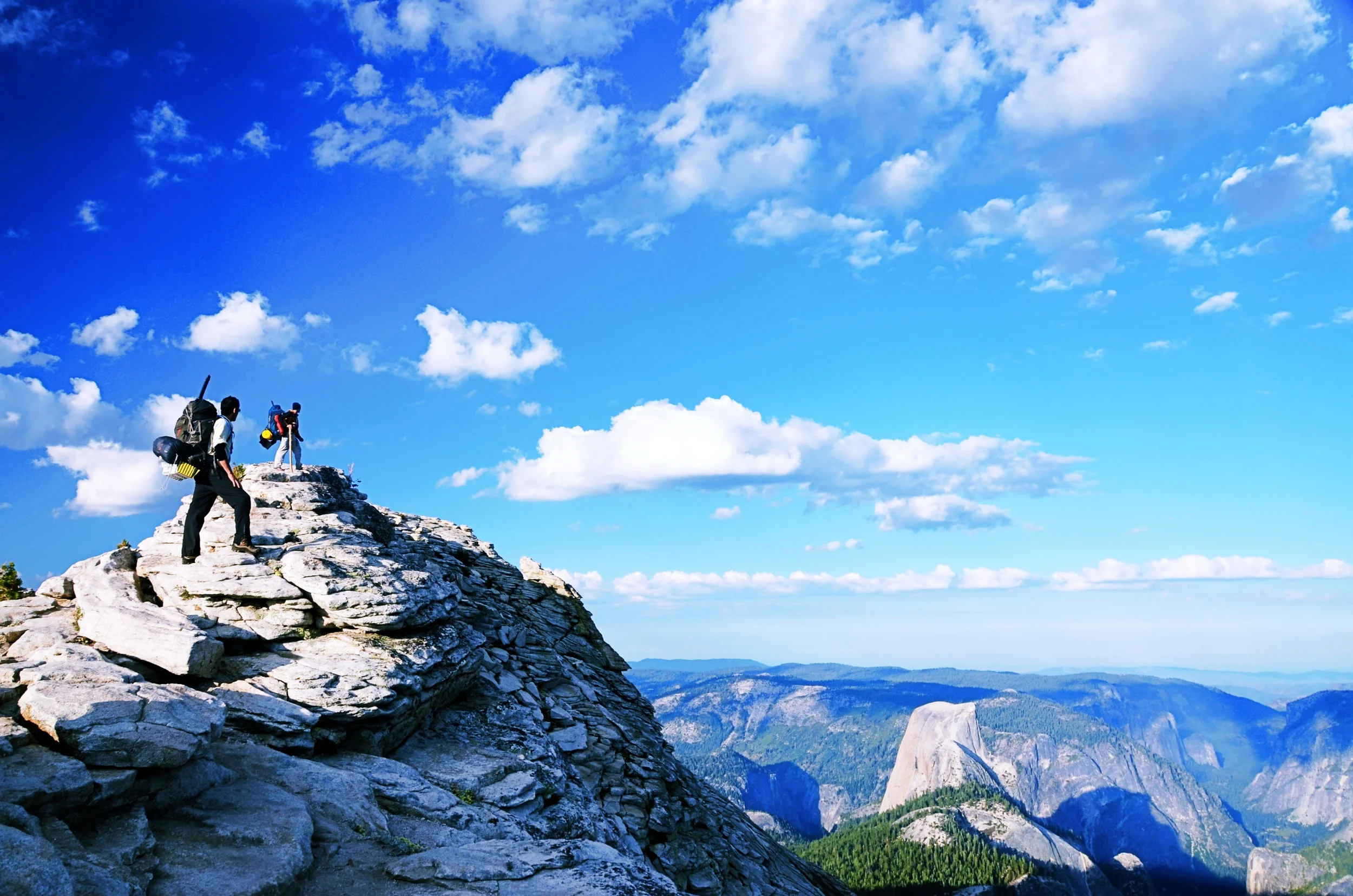



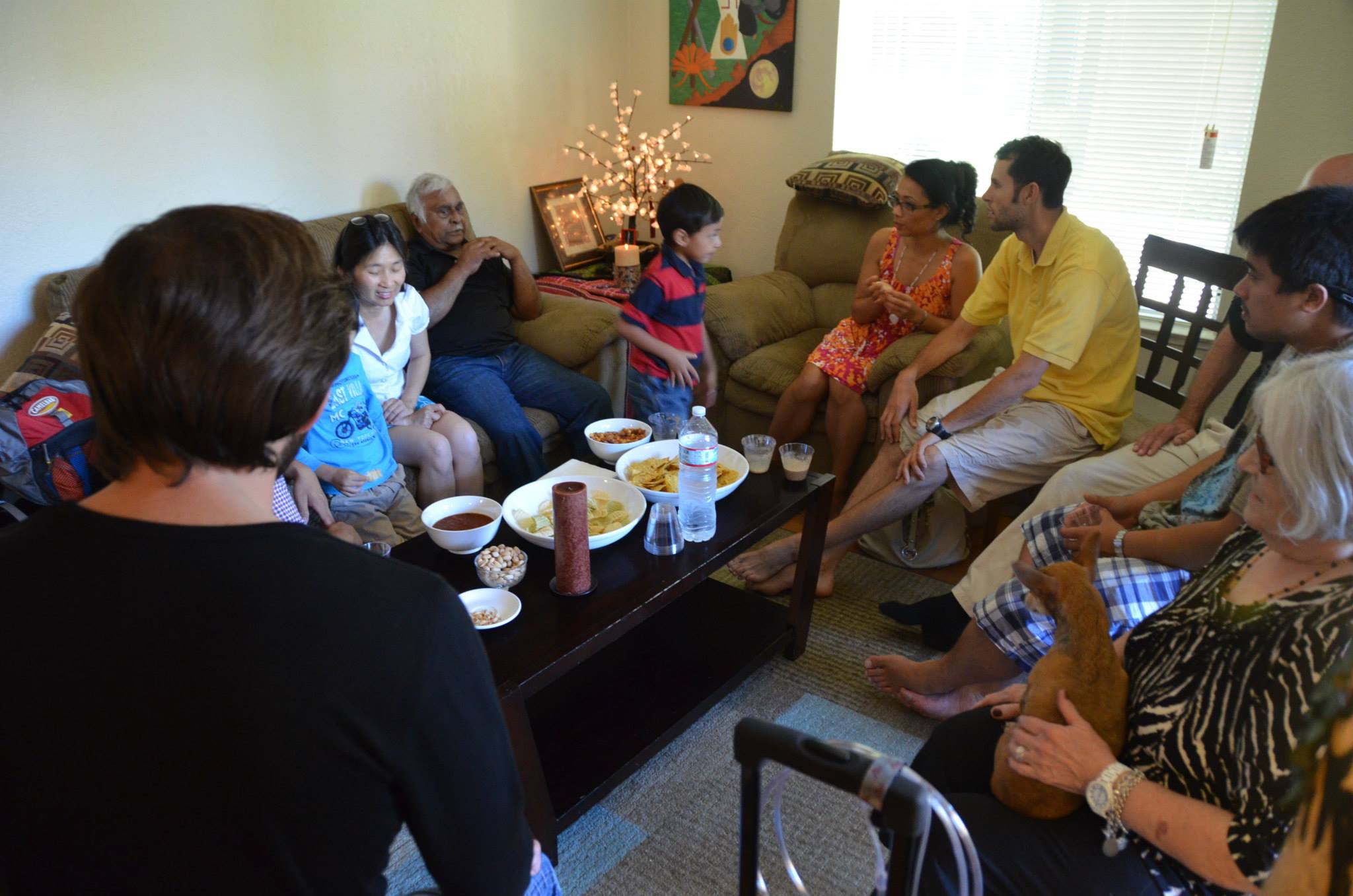

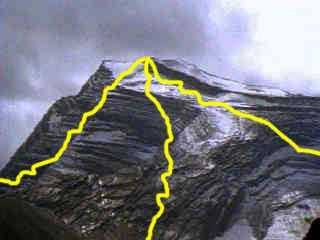

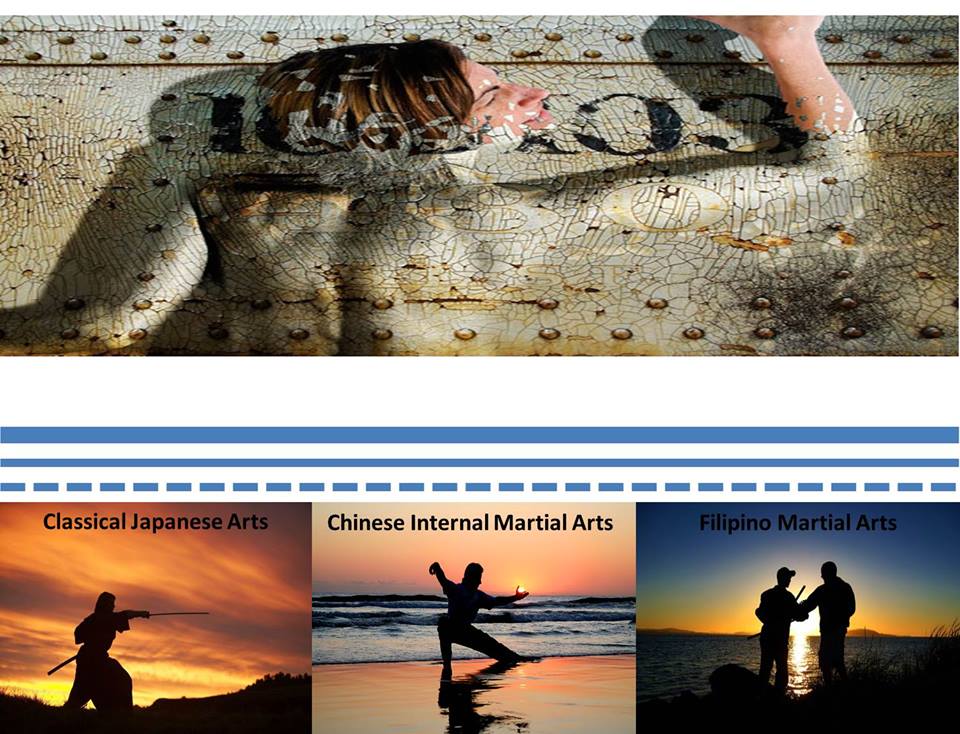











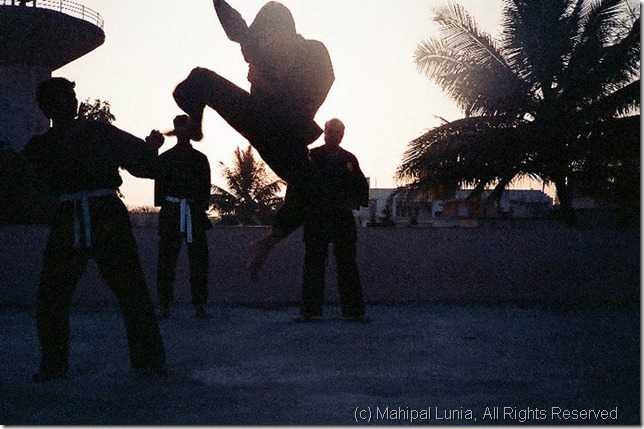 The cold breeze in November at 4 am does more than wake you up, as I ride a few kilometers to pick a friend up for our early morning Kenpo classes. This was a daily routine, been going on for over two years to train with a rather eccentric and rather combat oriented
The cold breeze in November at 4 am does more than wake you up, as I ride a few kilometers to pick a friend up for our early morning Kenpo classes. This was a daily routine, been going on for over two years to train with a rather eccentric and rather combat oriented 